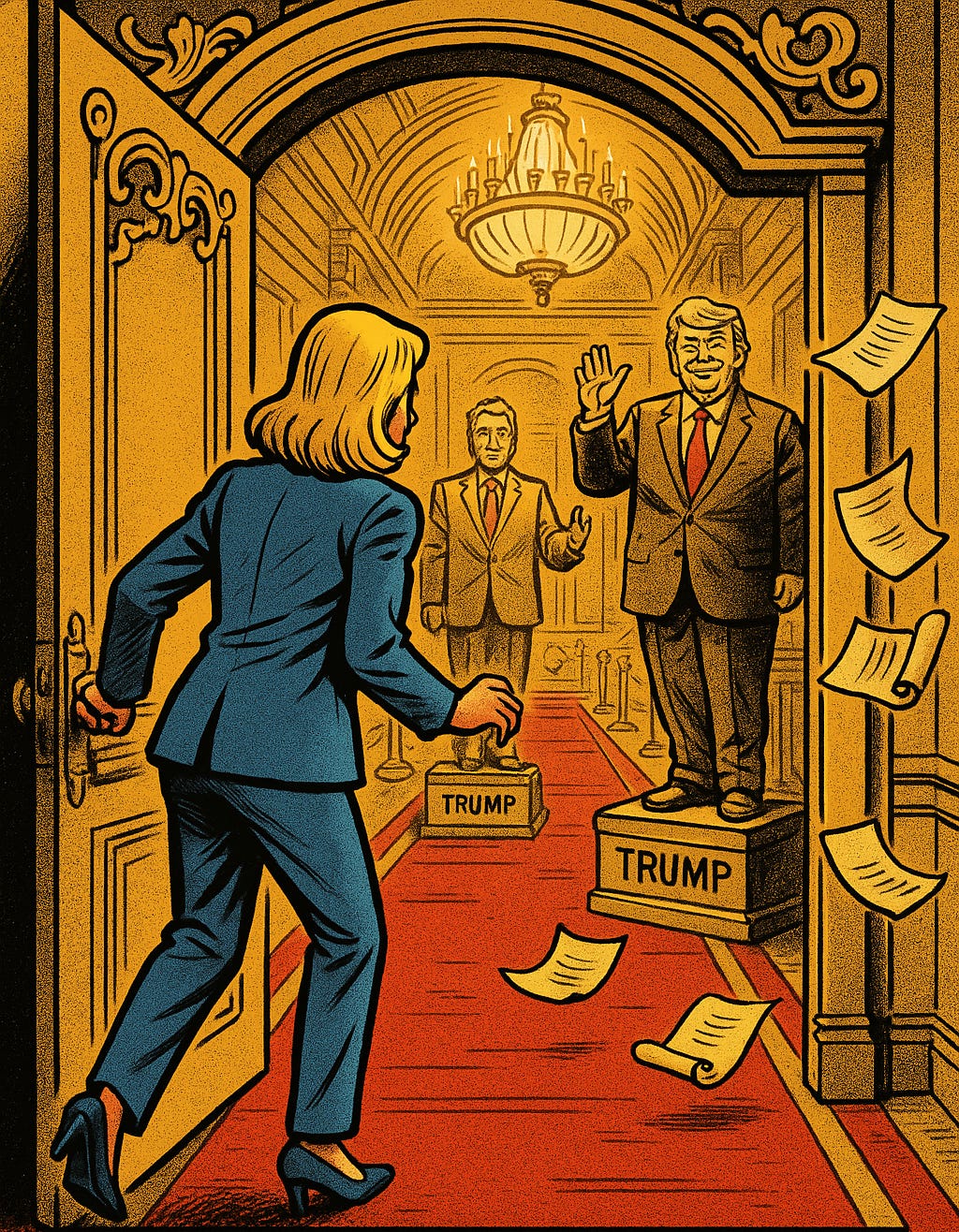Debating Conservatism While the House Burned
We Spent Years Debating If Trumpism Was Conservatism. Why?

During the first Trump term, I engaged with a circle of ‘Never Trump’ Republicans who fascinated me. They were, in many ways, political exiles, individuals who had broken from their coalition to stand against the tidal wave overtaking their party. I found some of them whip-smart, deeply read, and, to a degree, brave. Speaking out against Trump, especially from within the GOP, meant swimming against a riptide of professional incentives and social pressure.
But even as I found camaraderie with some of them, I often argued the uncomfortable truth: yes, this is real conservatism. That wasn’t just contrarianism; it was a conclusion I arrived at after years of watching the ideological arc bend not toward justice, but toward consolidation, exclusion, and reactionary politics. My curiosity about the American right began as an undergraduate, when I became fixated on the country’s pivot from the New Deal to the New Right. That quiet academic fascination matured into a deeper commitment during graduate school, where I studied these shifts through the lens of communications theory and content analysis.
Now, as I approach my 31st birthday, deep into a second Trump presidency, I look back and wonder if the national obsession with whether Trumpism was “true conservatism” wasted time we didn’t have. Instead of facing what was unfolding, much of the elite media and political class busied itself with rhetorical hair-splitting, trying to resuscitate a vision of conservatism that maybe never existed outside of Reagan campaign ads and Bush-era think tank brochures.
Historian Allan Lichtman’s recent chapter in Conservative at the Core cuts through the fog with a chainsaw. The debate, he argues, was never truly about ideology. It was about image. Trump didn’t hijack conservatism. He fulfilled its trajectory. Lichtman provides the receipts: 90% of conservatives backed Trump in 2024, a level of support that eclipses Reagan. The GOP didn’t abandon its values, it just followed them to their natural endpoint. And if you’re shocked by where that path led, perhaps you weren’t paying attention to where it started.
Despite two impeachments, dozens of indictments, and an aura of constant chaos, Trump’s grip on the conservative movement only tightened. And why wouldn’t it? His policies, like tax cuts for the wealthy, regulatory rollbacks, Christian nationalist rhetoric, and anti-immigrant executive actions, all fit neatly within the conservative playbook, just stripped of euphemism. Lichtman points out that these were not deviations but continuities. Trump gave the movement what it wanted, just with less polish and more pugilism.
And here’s the problem: marginalized communities had long been aware of this. Black, brown, queer, immigrant, and working-class Americans didn’t need a graduate seminar or a political science explainer to understand what was coming. The lived experience was proof enough. But their analysis was too often sidelined and branded as alarmist, radical, or outside the bounds of respectable discourse. Instead, the mainstream conversation kept circling the drain of whether this was a betrayal of conservatism, as if naming the betrayal could reverse the damage.
We could’ve been preparing a defense of democracy. Instead, we spent years trying to sanitize the past and dreaming of a return to a Reaganite fantasy where the right was honorable and the Constitution unbothered. But as Lichtman shows, even Reagan’s legacy is littered with the precursors of Trumpism: culture war rhetoric, moral panics, dog-whistle politics, and power consolidation in the executive branch.
In hindsight, the institutional response to Trump’s first term feels like trying to mop a flood with a silk handkerchief. We watched major newspapers, cable pundits, and Democratic centrists flirt with “return to normalcy” narratives, as if the real crisis was Trump’s tone, not his agenda. January 6th should’ve ended that delusion, and it didn’t. We are now living in what that failure birthed.
The current Trump presidency has taken the performative politics of the first term and fused it with institutional muscle. The executive branch now wields powers that would have seemed the stuff of dystopian fiction to the framers. And yet, we’re still debating whether the man in the Oval is a conservative or a Caesar.
I say this with reverence for the cruel tricks history plays, how it can isolate us through time, class, and cultural insulation. But people have been warning us for decades that the conservative movement was headed here. Lichtman simply crystallizes it with a historian’s precision.
Trumpism isn’t a rupture. It’s a culmination.
So yes, I’m almost 31. I’ve spent nearly a decade caught in a conversation that always felt clearer than those trying to save conservatism’s soul would admit. Now here we are: a militarized capital, a gold-plated White House, and a Constitution treated more like a suggestion than a statute. The question isn’t whether we misread conservatism. The question is why so many refused to believe those who never had the privilege of being surprised.
Inside the Gold House: Trump, Laura Ingraham, and the Performance of Power
Keep reading with a 7-day free trial
Subscribe to Stew on This to keep reading this post and get 7 days of free access to the full post archives.






